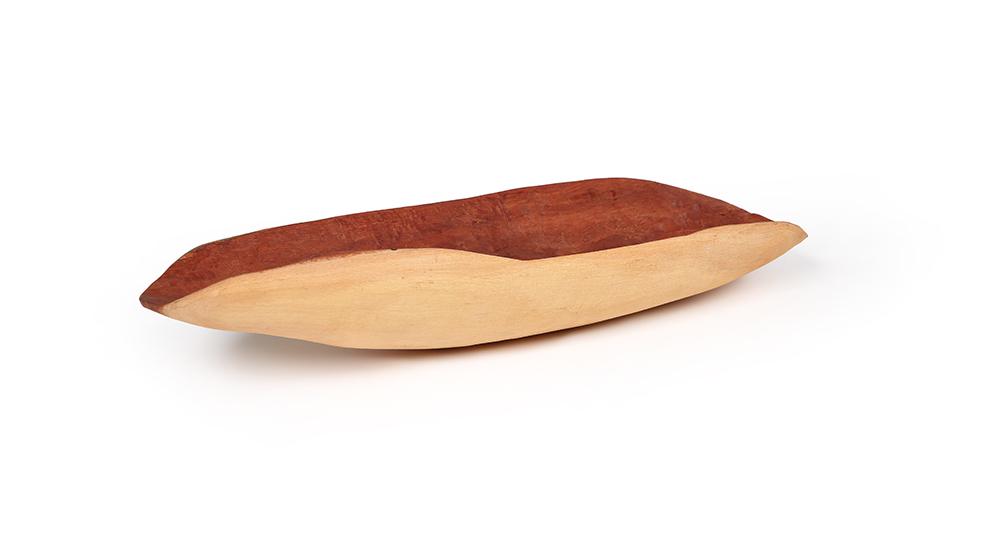Kanilpa (winnowing bowl)
Known collectively as punu, the carvings of Anangu have their beginnings in the Tjukurpa when the Creation Ancestors fashioned the first weapons and tools, setting down the laws and conventions of their design. Women carved a number of different sized bowls for their food gathering, processing, and water collecting. This bowl is known as kanilpa, long and narrow in shape and ideal for winnowing precious grains like wangunu or wintalyka (woolly butt grass seed or Acacia seed). One method of obtaining it is from the side of a muur-muurpa, bloodwood tree (Eucalyptus terminalus) with a long narrow trunk. A section is removed and hollowed out with fire before carving tools are used to shape it as light and strong as possible. Others are carved from a root section of the itara or river red gum (Eucalytptus camaldulensis). It takes a particular and highly refined skill to separate and sift seeds which may be as tiny as grains of sand and the women use a rhythmic rocking motion to efficiently separate and clean their seeds. It is also used in making kiti or spinifex resin where a fine powder must be separated from sand to make a bush glue. Julie Laidlaw is minyma Yarnangu, a Ngaanyatjarra speaking woman from the Western Desert area and based in Warburton. She is from a family of experienced carvers whose skills have been passed on through the Tjukurpa, the Law and way of life governing her country.

